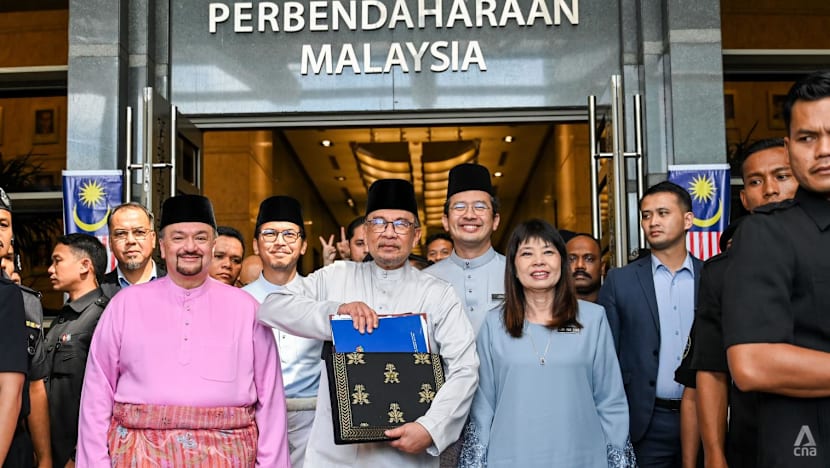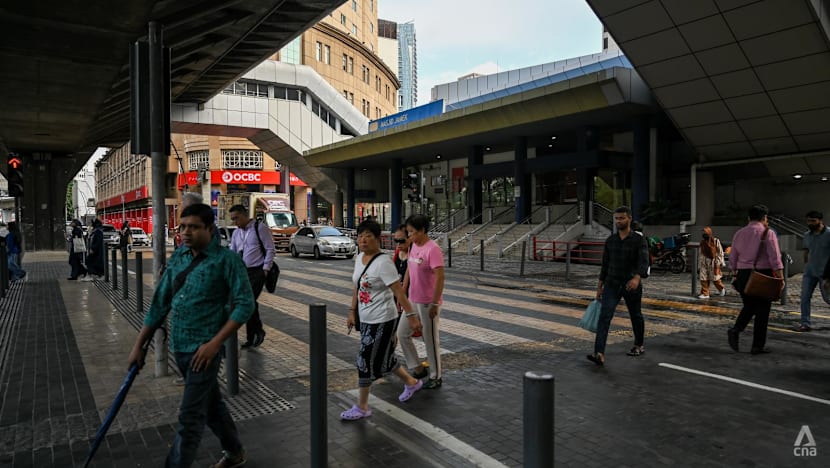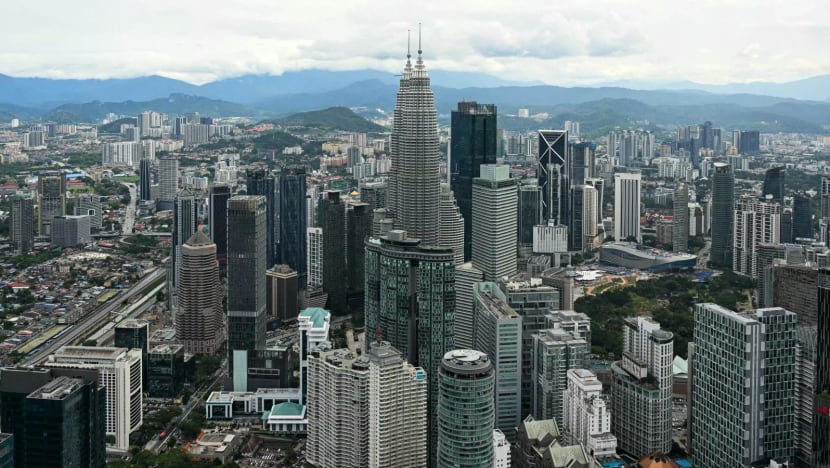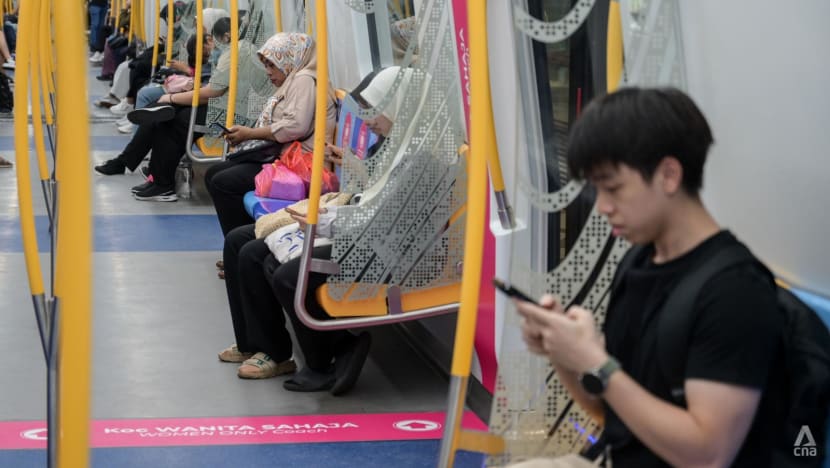Malaysia to unveil largest-ever budget while balancing fiscal discipline and cost-of-living relief, say analysts
The tabling of Budget 2026 on Friday at 4pm comes amid tariffs imposed by US President Donald Trump aimed at addressing trade imbalances.


This audio is generated by an AI tool.
SINGAPORE/KUALA LUMPUR: Amid global trade uncertainties, Prime Minister Anwar Ibrahim is expected to unveil on Friday (Oct 10) Malaysia’s largest-ever budget, economists predict, as the country seeks to balance the competing needs of rolling out cost-of-living measures while maintaining fiscal discipline to support long-term growth.
At the same time, experts add that Budget 2026 would likely take into account the upcoming slate of state elections due in the near future, through what some have reportedly described as being “rakyat-friendly” to win the support of the populace. Rakyat is the Malay word for “ordinary people” or members of the public.
Experts also note that the new budget will “set the tone” for Malaysia's economic transformation under the 13th Malaysia Plan, which was tabled in July. It outlines Malaysia’s development trajectory for the next five years and seeks to address pain points for Malaysians such as cost-of-living pressures.
“The Madani government will be eager to launch development projects recently announced in the 13th Malaysia Plan and show how it has redirected net gains from subsidy reforms and new revenue streams and extend tangible benefits to the populace in view of the upcoming Sabah election and more state elections ahead,” Lee Hwok-Aun of ISEAS-Yusof Ishak Institute told CNA, using the word Madani in reference to Anwar’s unity government.
The senior fellow and co-coordinator of the Malaysia Studies Programme at the institute was commenting on why the expenditure for the upcoming budget is likely to exceed that of previous years.
UOB economists had told Reuters that the government spending could rise further in 2026 to RM430 billion (US$102 billion) - up from a record RM421 billion this year - with higher allocations for targeted subsidies, social assistance and public services.
Meanwhile, economist Anthony Dass of the KSI Strategic Institute for Asia Pacific told CNA that it is likely to be a “defensive and big budget” - one that is populist and politically pragmatic amid global uncertainty and tariff headwinds.
But others had warned that expectations are high for the government to keep its debt in check, to maintain its fiscal discipline and to set the stage for sustainable, long-term growth.
“More than just figures on paper, it is anticipated to outline priorities for smarter spending, stronger infrastructure, increased support for the people, improved business opportunities, and a faster push towards a greener future,” said Barnabas Gan, who is the group chief economist at RHB Banking Group.
With several states set to hold local legislative elections, Alissa Marianne Rode, who is senior manager of research at the Institute for Democracy and Economic Affairs (IDEAS), also told CNA that “economic priorities can look different from state, federal, and political perspectives”.
“With the upcoming Sabah (state) elections and Melaka’s likely (state) election next year, development expenditure allocations across states should be examined for balance, transparency, and alignment with the long-term priorities of the 13th Malaysia Plan,” she said.

BUDGET 2026 AMID TRUMP TARIFFS
The tabling of Budget 2026 on Friday at 4pm comes amid tariffs imposed by US President Donald Trump aimed at addressing trade imbalances. Malaysia saw a reduced tariff rate of 19 per cent on its goods exported to the US, down from the 24 per cent that was first announced in April.
Anwar in April had considered the reciprocal tariffs by Trump as a “major threat” to the current global trade and investment system.
CNA reported earlier that businesses in the electronics and furniture sectors, which make up some of Malaysia’s biggest exports to the US, have expressed concerns over a potential “trade famine” that could force them to downsize or even shut operations.
Analysts believe the resulting economic slowdown caused by the tariff turbulence is expected to continue into next year.
Thus, the Malaysian government is likely to continue helping households and businesses to “adapt to or absorb the shock”, Stewart Nixon, who is deputy director of research at IDEAS, told CNA.
Agreeing, senior ASEAN economist at OCBC Lavanya Venkateswaran said that the bank expects there to be some form of “targeted support provided to small, medium enterprises that might be impacted by tariffs”.
Meanwhile, Dass from KSI opined that the “defensive and expansionary budget” is needed as the Southeast Asian country has to “spend big” to cushion the short-term pain from Trump’s tariffs that are “choking” exports, jobs and revenue.
According to the Malaysian International Chamber of Commerce and Industry (MICCI), Trump’s tariff shock could lead to as many as 50,000 direct and indirect job losses mainly affecting Penang, Johor and Klang Valley, reported local news outlet the New Straits Times in April.
Dass added that the budget set to be tabled by Anwar - who doubles as finance minister - needed to stimulate domestic demand to offset weaker exports and kickstart the 13th Malaysia Plan projects to anchor growth and re-position the country in new supply chains.
In its pre-budget statement on Aug 8, the finance ministry said that Malaysia’s economy continued to demonstrate resilience despite heightened global trade tensions.
The country’s gross domestic product (GDP) in the first quarter of the year had expanded by 4.4 per cent, driven by household consumption, investment and the construction sector.
And despite global developments, the ministry projected Malaysia’s economy to grow by 4 to 4.8 per cent in 2025.

MAINTAINING THE LINE ON FISCAL DISCIPLINE BY “TRIMMING THE EDGES”
While the government remains committed to fiscal consolidation targeting a lower deficit of 3.8 per cent in 2025 from 4.1 per cent in the preceding year, analysts said the approach is likely to be in “a measured manner”.
“To increase fiscal space for addressing cost-of-living pressures and supporting new development projects under the 13th Malaysia Plan, there needs to be deeper subsidy rationalisation and broader revenue-raising efforts,” said Rode of IDEAS.
“Yet the approach towards trimming the edges is likely to continue, as fiscal policy has so far erred on the side of caution in avoiding negative public sentiment.”
Anwar in September announced that all Malaysians, regardless of income, will enjoy subsidised RON95 fuel prices of RM1.99 per litre from Sep 30, down from RM2.05 per litre previously.
The changes come after Anwar previously said during his Budget 2025 speech last year that subsidies for RON95 fuel would also be cut for Malaysians in the top 15 per cent (T15) of the country’s income group.
Analysts have said that changes to the fuel subsidy rationalisation scheme - originally set for mid-2025 and aimed at also removing subsidies for the wealthy - could affect Malaysia's fiscal consolidation plans.
Besides deeper subsidy rationalisation, economists do not rule out duties on alcohol and tobacco in the upcoming budget to further finance the healthcare priorities of the government.
“A proposed hike in the cigarette tax could generate over RM700 million annually whilst advancing public health goals,” said RHB’s Gan.
Agreeing, Dass said that the Malaysian government is focusing on “administrative efficiency” and “base-broadening” taxes, instead of sweeping new taxes.
At the same time, both Gan and Dass predict that the “long-awaited carbon tax” will finally be introduced, which would support Malaysia’s goal under its green energy and industrial transformation plans.
Separately, the finance ministry has said that the government’s pivot from blanket subsidies to a targeted model has delivered a dual benefit - of not only enhancing fiscal sustainability but also enhancing assistance to beneficiaries.
“Among others, allocation for Sumbangan Tunai Rahmah (STR) and Sumbangan Asas Rahmah (SARA) rose 30 per cent year-on-year to RM15 billion, more than seven-fold since the Government’s direct cash transfer programme was first introduced in 2012,” it said in August.

BALANCING REVENUE GENERATION WITH SUSTAINING BUSINESS COMPETITIVENESS
Meanwhile, the business community views Budget 2026 as a “decisive turning point” for Malaysia’s economic future that could strike a balance between revenue generation and business competitiveness amid a challenging global environment.
In a recent statement, the Federation of Malaysian Business Association (FMBA) said that the tabling of the budget could be a transformational opportunity to ease tax burdens, lower compliance costs, accelerate digital adoption and strengthen workforce skills.
To reflect inflation and evolving business conditions, for example, FMBA recommended raising the sales and service tax (SST) registration threshold for property rental and leasing firms from RM1 million to RM3 million in annual turnover.
It also proposed increasing the service tax exemption ceiling from RM500,000 to RM3 million to relieve financial pressure on small- and medium-enterprises grappling with rising property costs.
On digital transformation priorities, the business association - which represents over 700,000 firms - highlighted the need for “dedicated funding schemes” to support the mandatory e-invoicing transition for small- and medium-enterprises, noting the real costs of system upgrades, staff training and compliance.
“FMBA proposes government funding to co-finance industry-designed training programmes in digital skills, AI applications and organisational transformation, ensuring training relevance while supporting Malaysia’s transition to a high-income economy and helping businesses adapt to automation and globally supply chain changes,” said association chairman Abdul Malik Abdullah.
Looking ahead, Gan of RHB said that these micro-, small- and medium-enterprises - which make up 97 per cent of businesses in Malaysia - are likely to continue receiving support through grants, tax incentives, low-interest loans and digitalisation programmes.
These efforts are aimed at strengthening their resilience and global competitiveness, he said.
In sum, Gan said that Budget 2026, if delivered effectively, could mark a “turning point” in Malaysia’s economic journey, shifting the focus from short-term relief to a more sustainable, stable, and forward-looking course.
Lavanya of OCBC described Budget 2026 to be the government’s signal that it is balancing economic priorities.
“We do not expect fiscal consolidation to be dramatic, but (rather a) modest balancing (of) various policy priorities.”

























